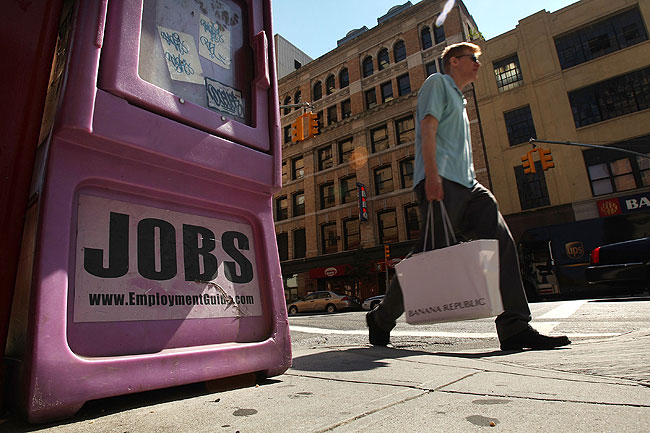Here’s a collection of colorful charts comparing job losses so far in this recession to those during other recessions and the Great Depression. – Ilene
On the job front, this is no Great Depression. Not even close
Courtesy of Justin Fox at TIME Magazine
Writing (and charting) about the latest employment numbers a couple of weeks ago, I concluded that:
It’s probably still nowhere near as dramatic a chart as the monthly numbers from 1931 and 1932 would make. But the BLS wasn’t on the case back then.
That brought an e-mail from Dartmouth economist Doug Irwin, who told me that the Bureau of Labor Statistics actually was on the case in the early 1930s, and that its numbers on employment at nonagricultural establishments in those years could be found online at the National Bureau of Economic Research’s Macrohistory Database. Sure enough, they could. Here’s what it looks like when you chart them against the the payroll employment data from the last six recessions:

Not even remotely in the same ballpark, it turns out. The post-World-War-II recesssions—including this one, so far—are just tiny blips in comparison with the Great Depression. I even had to cut the chart short because if I had carried it all the way to the point where employment finally reached its 1929 levels again, in 1940 (or so; there’s some conflicting data), you would have barely been able to see the other recessions at all. To make the comparison with the current recession a little clearer, I charted the first 14 months of Depression job losses against the 14 months of job losses we’ve had so far in this recession:

Again, really no comparison at all. I was a little worried that this might be because the 1930s numbers were not in fact comparable with today’s. An e-mail from Susan B. Carter of UC Riverside, an expert on historical labor market data, reassured me on that front. "In my view, this series is comparable to those you have displayed for later periods and certainly the best you can get," she wrote.
It is true that a larger share of the workforce was still on the farm in the 1930s, so nonfarm employment wasn’t quite the all-important indicator then that it is now. Still, it’s clear that the employment downturn we’ve been dealing with, while probably the worst since the Great Depression, is much, much closer in severity to the recessions of the mid 1970s and early 1980s than to the utter disaster of the 1930s. That’s no guarantee that it won’t get worse, of course. But it is useful to know.
Thanks to TIME.com graphics czar Feilding Cage for making the charts look nice. Since he’s back, I also got him to redo my most recent chart comparing job losses in the past six recessions (my version was pretty ugly):

Update: I should note that the 1930s numbers aren’t seasonally adjusted, while the modern ones are. I just didn’t even think of that when I was putting them together. Sorry. It doesn’t affect the basic point of the charts, but it does explain why the 1930s numbers are so much herkier and jerkier than the modern ones.


